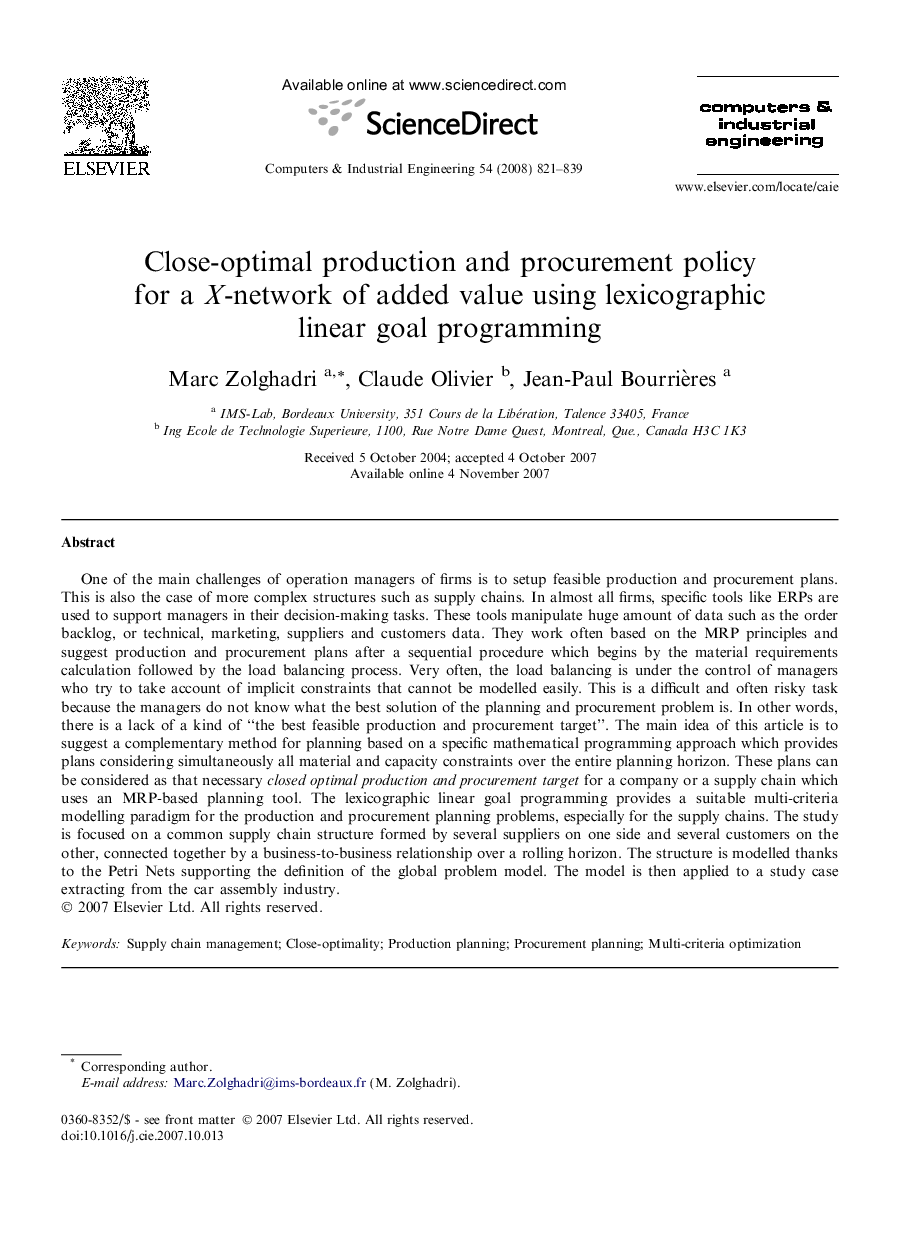| کد مقاله | کد نشریه | سال انتشار | مقاله انگلیسی | نسخه تمام متن |
|---|---|---|---|---|
| 1135659 | 956107 | 2008 | 19 صفحه PDF | دانلود رایگان |

One of the main challenges of operation managers of firms is to setup feasible production and procurement plans. This is also the case of more complex structures such as supply chains. In almost all firms, specific tools like ERPs are used to support managers in their decision-making tasks. These tools manipulate huge amount of data such as the order backlog, or technical, marketing, suppliers and customers data. They work often based on the MRP principles and suggest production and procurement plans after a sequential procedure which begins by the material requirements calculation followed by the load balancing process. Very often, the load balancing is under the control of managers who try to take account of implicit constraints that cannot be modelled easily. This is a difficult and often risky task because the managers do not know what the best solution of the planning and procurement problem is. In other words, there is a lack of a kind of “the best feasible production and procurement target”. The main idea of this article is to suggest a complementary method for planning based on a specific mathematical programming approach which provides plans considering simultaneously all material and capacity constraints over the entire planning horizon. These plans can be considered as that necessary closed optimal production and procurement target for a company or a supply chain which uses an MRP-based planning tool. The lexicographic linear goal programming provides a suitable multi-criteria modelling paradigm for the production and procurement planning problems, especially for the supply chains. The study is focused on a common supply chain structure formed by several suppliers on one side and several customers on the other, connected together by a business-to-business relationship over a rolling horizon. The structure is modelled thanks to the Petri Nets supporting the definition of the global problem model. The model is then applied to a study case extracting from the car assembly industry.
Journal: Computers & Industrial Engineering - Volume 54, Issue 4, May 2008, Pages 821–839